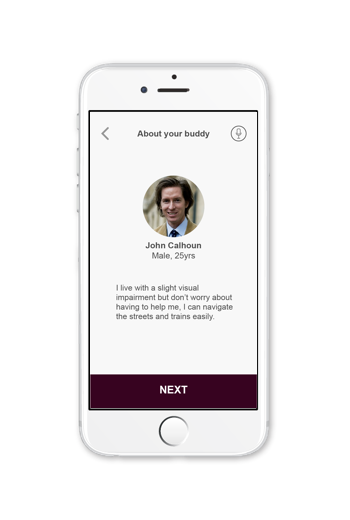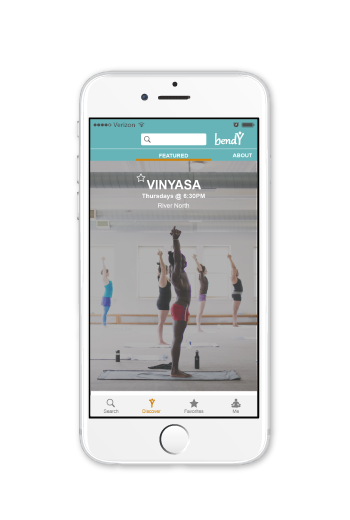What is work/life balance like in the gig economy?
Rideshare drivers’ ambitions must fit within a flexible driving schedule managed by algorithms.
Our Brief
Rideshare companies market their value to drivers as a side-gig that provides extra income and autonomy to pursue true passions, but to what extent? What does autonomy look like for drivers in the gig economy?
Our Context
The rise of the gig economy has raised questions about the relationship between companies in this industry and their contracted workers, especially drivers for services Lyft and Uber. The driver yields typical work amenities for the satisfaction of being their own boss and setting their own schedules. Additionally, in many cases the driver expects to pursue their own entrepreneurial endeavors while being a driver. At the time of this project—Q4 2016—both Lyft and Uber were private companies that had not released data gathered from their services making it difficult to analyze quantitatively.
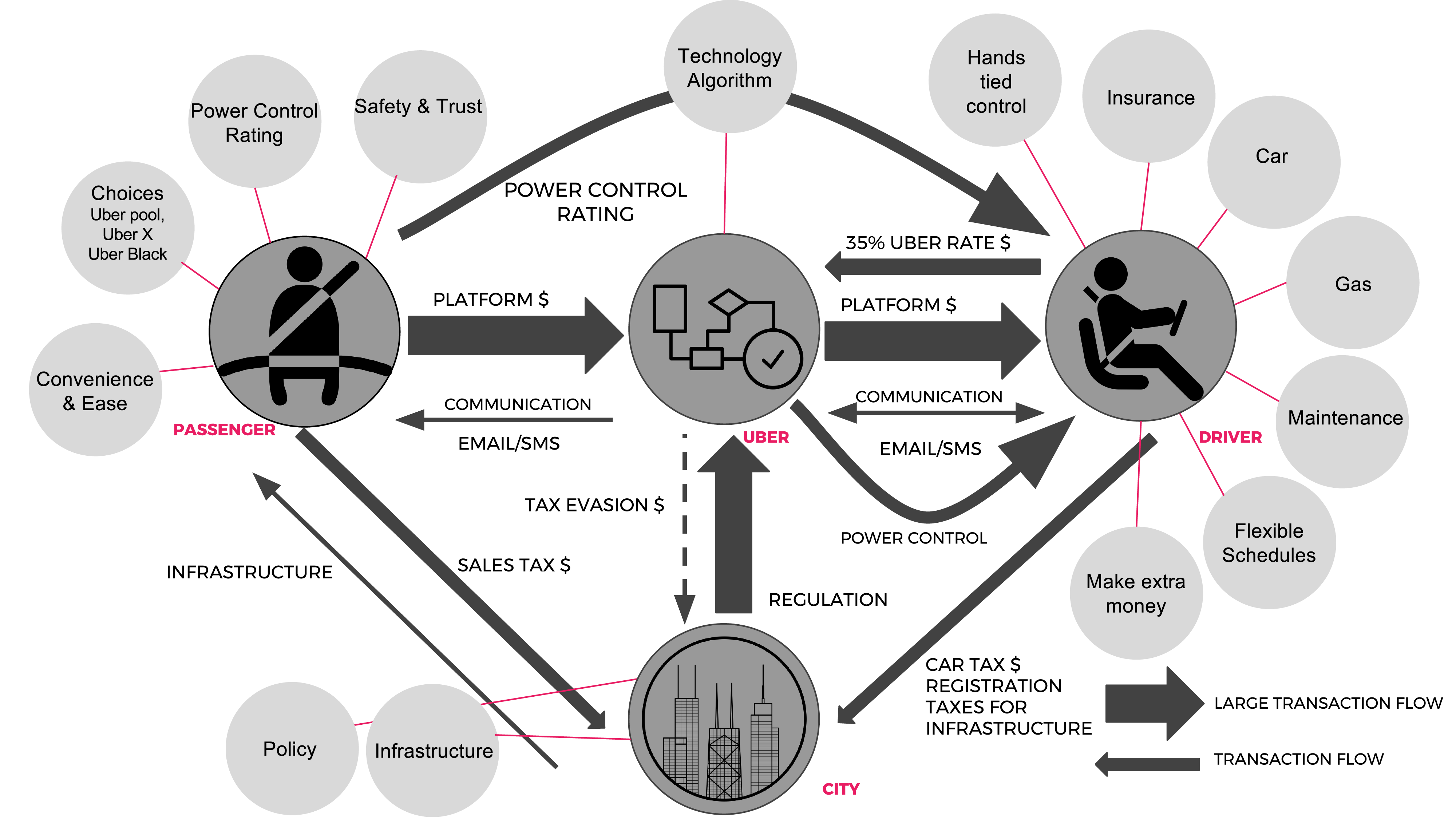
Above: Value web of rideshare economy
Our Approach
We deployed across multiple Uber and Lyft rides to research drivers' experiences through interviews and cultural probes. The challenge was to introduce ourselves, build rapport, and go through key questions within the time it took to arrive at our destination. In addition, we employed digital ethnography by posting questions in online rideshare forums. Our belief was that we would find drivers are losing control of their time to rideshare services and becoming wary of their role in the gig economy.
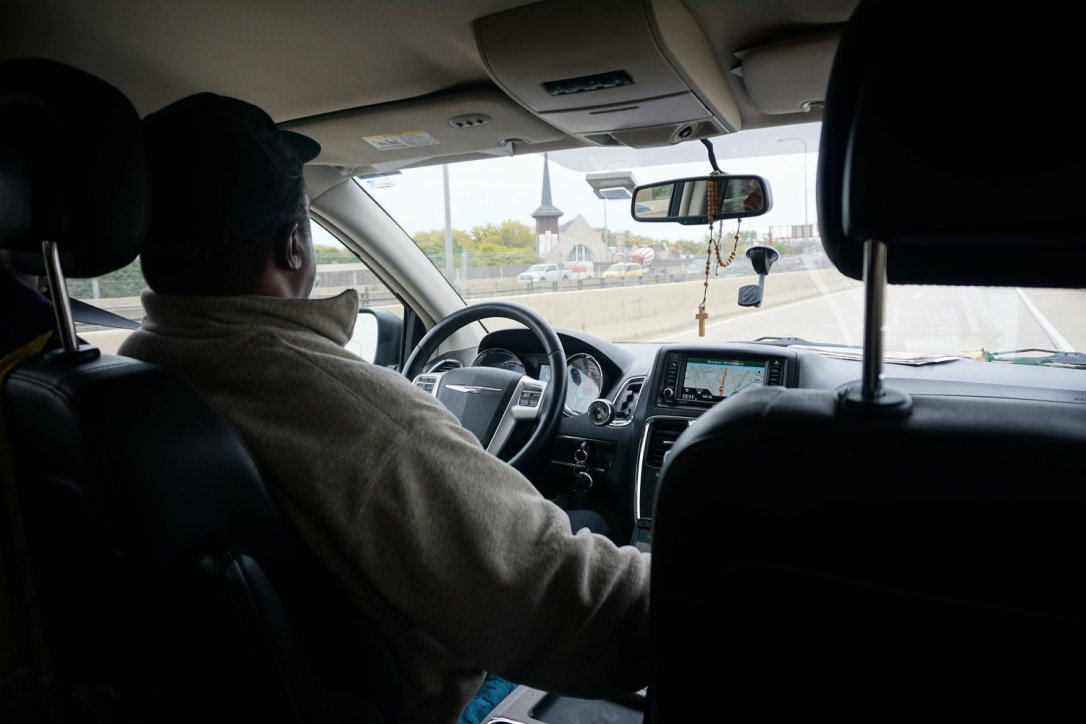
Above: We conducted our interviews in the backseat of several Ubers/Lyfts
We also asked drivers to draw a self-portrait with the most important things in their lives—why they got up in the morning. This encouraged drivers to think deeply on why and/or for whom they were spending time driving.
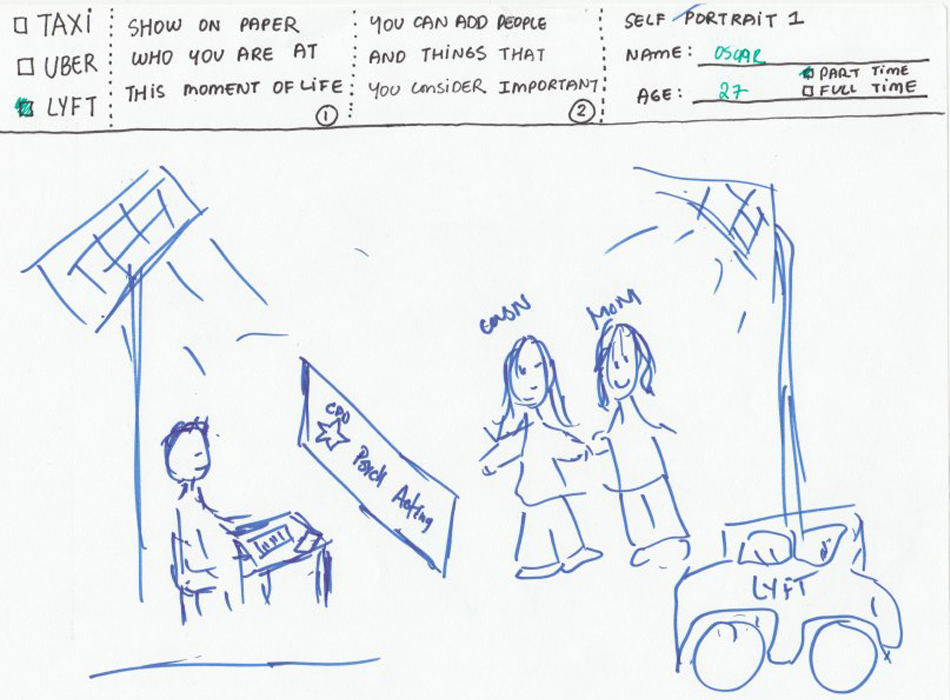
Above/Below: The self-portrait exercises helped interviewees open up personally as they described what they were drawing.
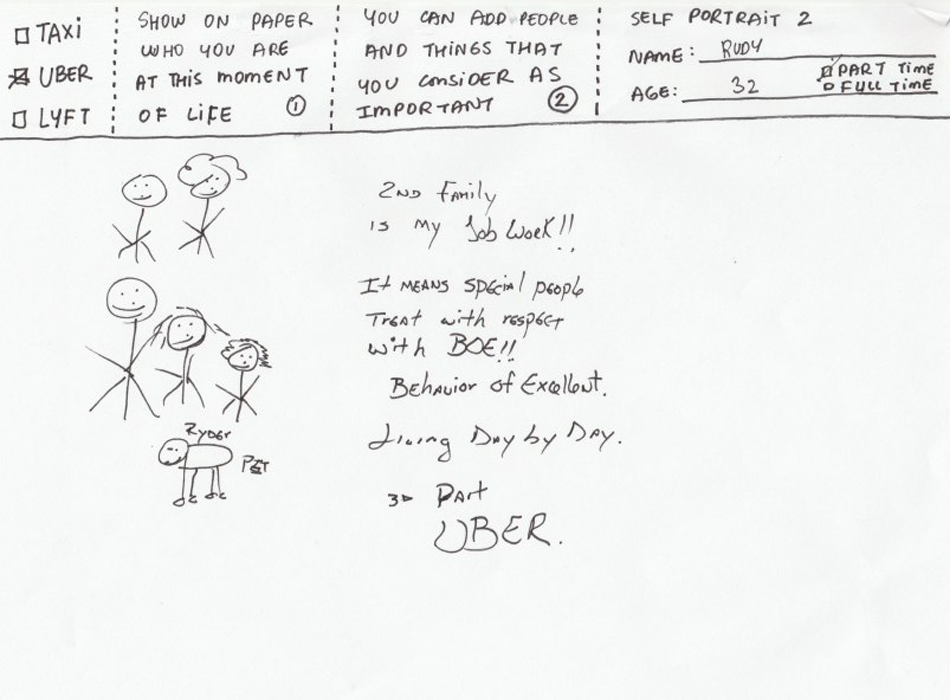
Most interviews revealed an additional, primary occupation that Uber/Lyft driving was supplemental to. The primary occupations were typically well-suited for flexible schedules including fitness trainers, actors, and musicians but not all occupations fit this mold, for example, one driver we interviewed was trying to manage a brick and mortar store with a relative and was finding it difficult to do both. Yet, we found most drivers were content with driving for Uber/Lyft as a means for supplemental income to support primary endeavours around saw themselves as their own boss.
As mentioned earlier, we also posted questions in online rideshare forums and received more negative responses compared to our in-person interviews. We think the anonymity of an online forum gives way to complaints and sharing bad experiences. In addition, our role as researcher and rider during the interview could have tipped our drivers' responses toward positive since they would be hoping for a 5-star review after dropoff.
Below: From our data we created a journey map detailing a driver's day. Fluctuations in emotion occur constantly based on their riders.
Our Outcomes
5 major insights from our research emerged:
Flexibility and Control Drivers have a sense of control over their work schedules enhanced by the fact that there is no traditional boss to report to. Furthermore, drivers enjoy the freedom of turning the app on/off
"Uber is good. In part-time, Uber is good. There is no pressure, nothing. If you don't want to work you can go home and relax. You can turn off your application, you can get nothing, nothing, no request, nothing"
Algorithm We found that the boss was in fact the algorithm of these platforms through surge pricing, deductions, the rating system, and keeping drivers classified as contractors maintained a digital boss relationships between driver and company.
"[Uber] will deduct around $200-250. It is according to Uber calculations. I don't know how to calculate deduction amount."
Aspiration Most of the drivers we met maintined another job which was flexible itself including fitness trainers, musicians, actors, and part-time store employees. Uber became a placeholder while they worked toward their true aspiration.
"I'm a driver, actor in commercials, and a personal trainer."
Values Driving for rideshare platforms invoked values including social climbing, safety, and being an entrepreneur.
"Being an Uber driver is a business."
Financial The financial gain for drivers varies according to multiple factors. Some drivers calculated their earnings to be on-par with minimum wage when factoring hours while other drivers found they were earning more driving than in their previous full-time job. Finally, the overhead costs for driving were a burden that are not realized before joining as a driver.
"Taxes are a separate thing. If you're able to manage your expenses like cheap gas."
Though our brief for this project did not include concept development we identified opportunity areas from the research we conducted. Drivers are underserved in regards to support features on both Uber and Lyft apps that can make drivers' gigs easier, for example, apps might provide gas mileage estimators that help drivers optimize their driving. Also, if these platforms promote their services to drivers as supplemental gigs then how might Uber/Lyft help drivers streamline workflows between multiple gigs?
